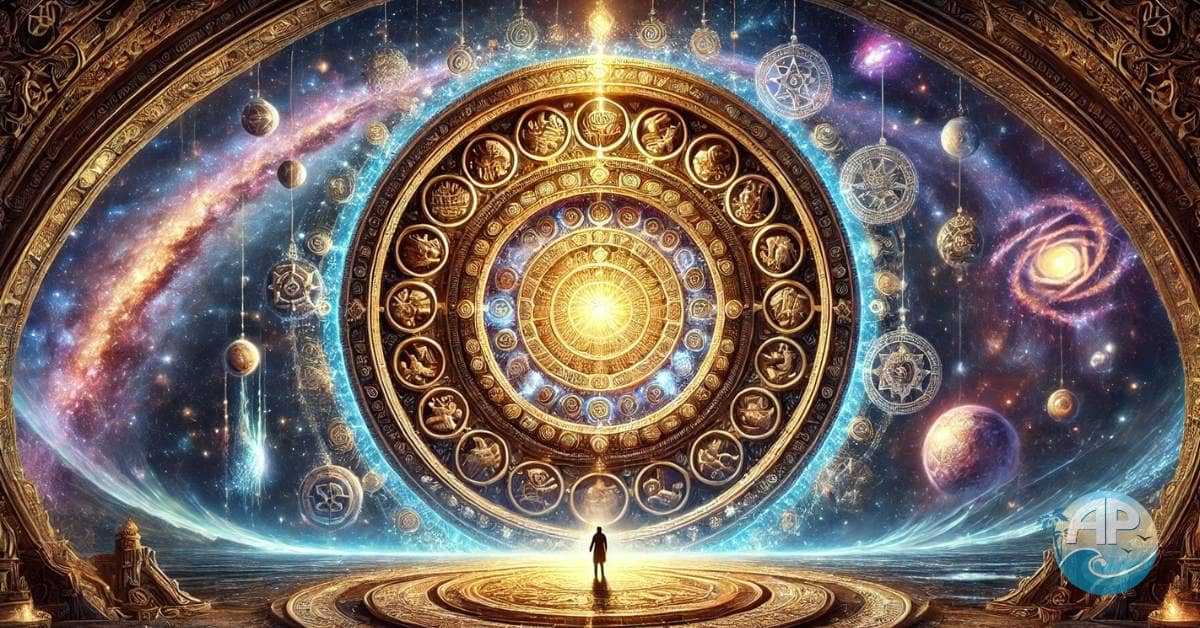Explore how ancient beliefs in cyclical time challenge our linear perception and reveal time as a potential illusion.
Table of Contents
- Intro: Cyclical Time & Illusions
- Hindu Yugas: Ages Repeating Forever
- Buddhist View: Life’s Endless Cycle
- Mayan Calendar: Loops in Time
- Time’s Illusion: Science & Thought
Introduction: Cyclical Time and the Illusion of Linearity
For centuries, humans have sought to understand the nature of time. Modern society views time as a straight arrow—progressing from past to future. However, many ancient civilizations perceived time as cyclical, an eternal loop of events and patterns. This challenges the widely accepted linear model and raises a profound question: Is time merely an illusion?
From the Hindu Yugas to the Mayan Calendar, these ancient perspectives suggest that our experience of time might be one interpretation among many. Could our belief in linear progression simply mask a deeper, repeating reality?
Discover more in: Time Is an Illusion: What If Reality Isn’t What It Seems?
Hindu Yugas: The Endless Repetition of Ages
In Hinduism, time is divided into four Yugas (ages): Satya Yuga, Treta Yuga, Dvapara Yuga, and Kali Yuga. These Yugas represent a continuous cycle of creation, preservation, and destruction. At the end of each cycle, the universe is dissolved, only to be reborn again.
- Satya Yuga: The golden age of truth and enlightenment.
- Kali Yuga: The current age, marked by chaos and spiritual decline.
Hindu philosophy teaches that after Kali Yuga, the cycle begins anew. This perspective suggests that the “march of time” is not a straight path but a wheel turning endlessly.
“Time is like a river, but it loops back on itself, endlessly renewing its flow.” – Ancient Hindu Proverb
The concept of Yugas challenges our perception of progress, hinting that humanity might be destined to repeat patterns over and over.
Buddhist Reincarnation: A Cycle of Life and Death
Buddhism also presents time as cyclical, primarily through its teachings on Samsara, the cycle of birth, death, and rebirth. Unlike the linear belief in a singular life, Samsara suggests that each soul undergoes countless lives, driven by karma.
- Rebirth is not random but follows patterns based on past actions.
- Enlightenment represents breaking free from this cycle, transcending time and space.
This view implies that time is not a fixed progression but a series of interconnected experiences. The past, present, and future are intertwined in an intricate web.
“As long as you believe you are a separate self, you remain caught in the cycle of time.” – Buddhist Wisdom
Buddhism offers profound insights into the illusion of time, suggesting that liberation comes not from mastering time but from seeing through it.
The Mayan Calendar: A Loop of Cosmic Time
The Mayan Calendar is another fascinating example of cyclical time. Unlike the Gregorian calendar, which progresses linearly, the Mayan system operates in cycles, particularly the Long Count Calendar. This calendar tracks massive cycles spanning thousands of years, culminating in cosmic renewal.
- The Mayans believed the universe underwent regular periods of creation and destruction.
- The infamous 2012 prophecy was not about the “end of the world” but the end of one cycle and the start of another.
Their understanding of time reflects a deep awareness of natural and cosmic rhythms. Rather than viewing life as a straight path, the Mayans saw it as an intricate dance of repeating patterns.
Discover more in: “Ancient Cycles: How Cultures Viewed Time as a Loop”
Time’s Illusion: Philosophical and Scientific Echoes
The belief in cyclical time aligns with modern philosophical and scientific inquiries:
- Philosophy: Thinkers like Friedrich Nietzsche explored the concept of eternal recurrence, suggesting that life endlessly repeats itself.
- Quantum Physics: Some theories propose that time may not exist as a fundamental entity but emerges from deeper, timeless realities.
These ideas challenge the linear narrative and reinforce the ancient wisdom that time might be a construct of human perception.
Conclusion: The Eternal Dance of Cyclical Time
Cyclical time invites us to reconsider everything we know about reality. By understanding the repeating patterns in nature, history, and our own lives, we glimpse the possibility that time, as we experience it, might be an illusion.
Ancient civilizations like the Hindus, Buddhists, and Mayans didn’t see time as a race toward an endpoint. Instead, they viewed it as an eternal dance—a loop where past, present, and future coexist.
What if our journey isn’t about moving forward but embracing the cycles and patterns that have always existed?
As you ponder this timeless question, dive deeper into the mysteries of time: Time Is an Illusion: What If Reality Isn’t What It Seems?


